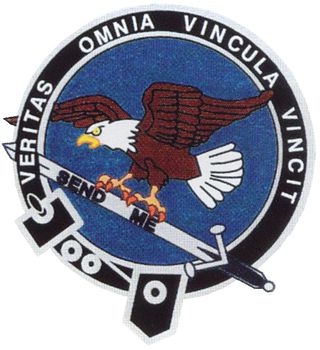
Operation Anaconda or the Battle of Shah-i-Kot was a military operation that took place in early March 2002 as part of the War in Afghanistan. CIA paramilitary officers, working with their allies, attempted to destroy al-Qaeda and Taliban forces. The operation took place in the Shah-i-Kot Valley and Arma Mountains southeast of Zormat. This operation was the first large-scale battle in the post-2001 War in Afghanistan since the Battle of Tora Bora in December 2001. This was the first operation in the Afghanistan theater to involve a large number of U.S. forces participating in direct combat activities.

The Sulaiman Mountains, also known as Kōh-e Sulaymān or Da Kasē Ghrūna, are a north–south extension of the southern Hindu Kush mountain system in Pakistan and Afghanistan. They are also known as Aparanchal Range, or Western Mountains, as they mark the westernmost boundary of the Indian Subcontinent. They rise to form the eastern edge of the Iranian plateau. They are located in the Kandahar, Zabul and Paktia provinces of Afghanistan, and in Pakistan they extend over the northern part of Balochistan and Waziristan as well as Kurram of Khyber Pakhtunkhwa. In southwestern Punjab, the mountains extend into the two districts of Dera Ghazi Khan and Rajanpur, which are located west of the Indus River on the boundary with Balochistan. Bordering the mountains to the east are the plains of the Indus River valley, and to the north are the arid highlands of the Central Hindu Kush whose heights extend up to 3,383 metres (11,099 ft). The total area on which this range spans around 6,475 sq. km. Together with the Kirthar Mountains on the border between Balochistan and Sindh, the Sulaiman Mountains form what is known as the Sulaiman-Kirthar geologic province.

MV TSgt John A. Chapman (T-AK-323) was a Buffalo Soldier-class container ship. She was one of Military Sealift Command's Prepositioning Program.

The 1st Ranger Battalion, currently based at Hunter Army Airfield in Savannah, Georgia, United States, is the first of three ranger battalions belonging to the United States Army's 75th Ranger Regiment.

The Spīn Ghar or Safēd Kōh meaning both White Mountain, or sometimes meaning white mountain range, is a mountain range to the south of the Hindu Kush. It ranges from eastern Afghanistan into Khyber Pakhtunkhwa, Pakistan, and forms a natural border between the two areas. Its highest peak is Mount Sikaram on the Afghanistan–Pakistan border, which towers above all surrounding hills to 4,755 m (15,600 ft) above mean sea level. The lower hills are mostly barren and treeless, but pine grows on the main mountains that form the East Afghan montane conifer forests.

Lieutenant General Franklin Lee Hagenbeck is a retired United States Army officer who served as the 57th Superintendent of the United States Military Academy from June 2006 to July 2010. Previous to his assignment at West Point, he was the Deputy Chief of Staff, G-1 United States Army, Washington, D.C.

The Intelligence Support Activity (ISA), also known at various times as Mission Support Activity (MSA), Office of Military Support (OMS), Field Operations Group (FOG), Studies and Analysis Activity (SAA), Tactical Concept Activity, Tactical Support Team, Tactical Coordination Detachment, and also nicknamed "The Activity" and the "Army of Northern Virginia", is a United States Army Special Operations unit which serves as the intelligence gathering component of Joint Special Operations Command (JSOC). Within JSOC, the unit is often referred to as Task Force Orange.

The Battle of Takur Ghar was a short but intense military engagement between United States special operations forces and al-Qaeda insurgents fought in March 2002, atop Takur Ghar mountain in Afghanistan. For the U.S. side, the battle proved the deadliest entanglement of Operation Anaconda, an effort early in the War in Afghanistan to rout al-Qaeda forces from the Shahi-Kot Valley and Arma Mountains. The battle saw three helicopter landings by the U.S. on the mountain top, each met with direct assault from al-Qaeda forces. Although Takur Ghar was eventually taken, seven U.S. service members were killed and 12 others were wounded. The battle is also known as the Battle of Roberts Ridge, after the first casualty of the battle, Navy SEAL Neil C. Roberts.
Nathan E. Self is an American author and former United States Army officer.
Maulvi Saif-ur Mansur was a senior Taliban commander.
Between 7 October 2001 and 30 August 2021, the United States lost a total of 2,459 military personnel in Afghanistan. Of this figure, 1,922 had been killed in action. An additional 20,769 were wounded in action. 18 operatives of the Central Intelligence Agency were also killed during the conflict. Further, there were 1,822 civilian contractor fatalities.

Medal of Honor is a first-person shooter video game developed by Danger Close Games and EA DICE and published by Electronic Arts. It is the thirteenth installment in the Medal of Honor series and a reboot of the series. The game was released for Microsoft Windows, PlayStation 3, Xbox 360 and J2ME on October 12, 2010. While the previous titles were set during World War II, Medal of Honor takes place during the War in Afghanistan. The game is loosely based on parts of Operation Anaconda; specifically, the events surrounding the Battle of Roberts Ridge.
John Chapman was a French soldier who fought in the American Civil War. Chapman received the United States' highest award for bravery during combat, the Medal of Honor, for his action during the Battle of Sayler's Creek in Virginia on 6 April 1865. He was honored with the award on 10 May 1865.
Combined Joint Task Force 180 was a provisional multinational land formation, primarily made up of units from the United States Army, that fought in the War in Afghanistan (2001–2021), especially in the initial invasion phase of 2001-2002. It was active from May 2002 to 2003/05. It was the senior headquarters in country reporting to United States Central Command.

John Allan Chapman was a combat controller in the United States Air Force who was posthumously awarded the Medal of Honor on August 22, 2018, for his actions in the Battle of Takur Ghar during the War in Afghanistan. He is the first airman to receive the Medal of Honor since the Vietnam War. He was inducted into the Hall of Heroes on August 23, 2018, and posthumously promoted to Master Sergeant on the following day.

Britt Kelly Slabinski is a retired United States Navy SEAL who received the Medal of Honor on May 24, 2018, for his actions during the Battle of Takur Ghar. He also participated in the highly publicized rescue mission to recover Army PFC Jessica Lynch.

Operation Mongoose was an American-led two week cave clearing operation in the Adi Ghar Mountains near the town of Spin Boldak in Kandahar Province. Launched on the 28 January 2003, over 350 US and coalition soldiers along with Afghan militia fighters, assisted by Apache helicopters and Norwegian F-16 fighter jets participated with the objective of searching through and destroying caves used by Hezb-e Islami, Taliban and al-Qaeda operatives. By the end of the operation, over 75 caves had been cleared.

The 123rd Special Tactics Squadron is a special operations unit of the Kentucky Air National Guard 123d Airlift Wing stationed at Louisville International Airport, Kentucky. The 123rd STS is one of only two Special Tactics Units in the Air National Guard.














